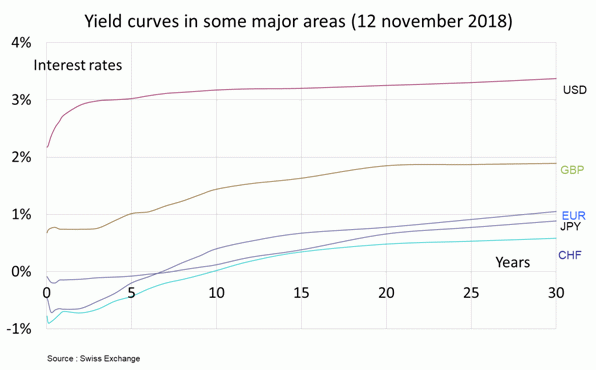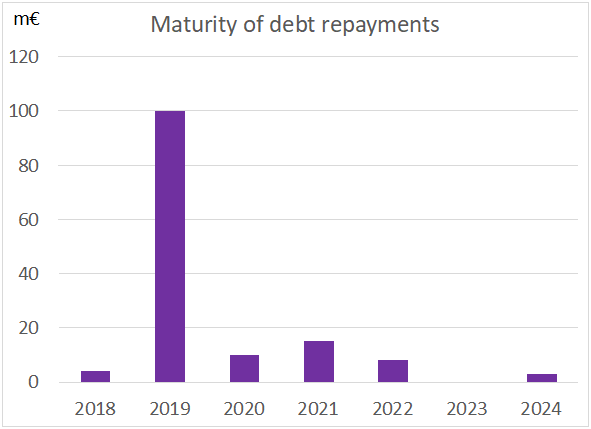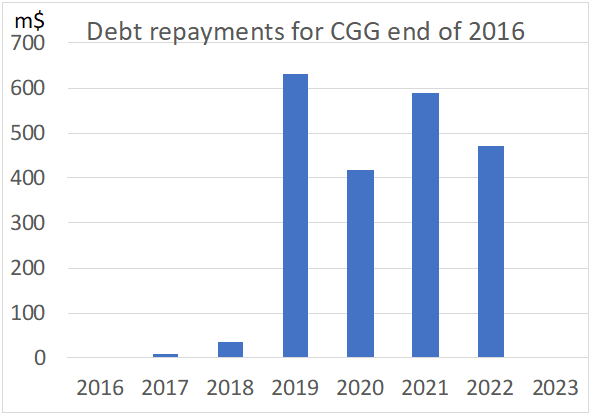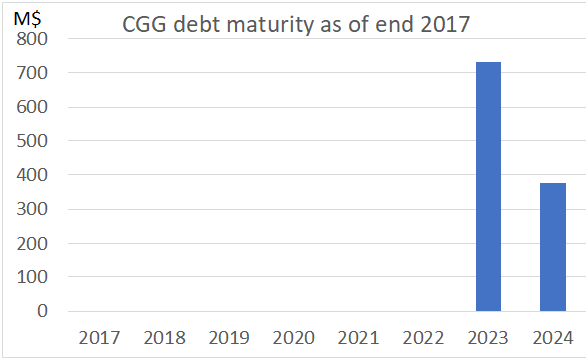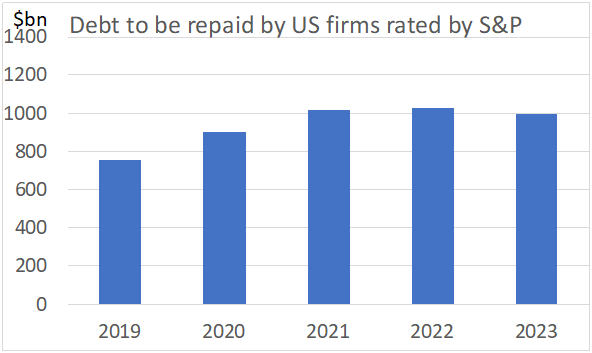Letter number 116 of November 2018
- TOPIC
- STATISTICS
- RESEARCH
- QUESTIONS & COMMENTS
- NEW
News : When accounting impacts on financial management decisions
Accounting was designed to translate the economic reality of a company into figures and thus provide managers, shareholders, creditors and more generally all stakeholders with a decision-making tool. However, we note that increasingly, and this is exacerbated by the development of financial markets, the complex rules for applying accounting standards (in particular IFRS) are influencing the management of the company. We have seen financial decisions that were ultimately made on the basis of their accounting treatment, which is sometimes debatable or under discussion, and not on the basis of the interests of the company or of its shareholders.
So, for example, how many times have we heard a treasurer decline a hedge because it wouldn’t “qualify as hedge accounting” (i.e., because of its characteristics, it would not be possible to offset it against the asset that it’s hedging thus creating volatility on the income statement[1]). It is often difficult to obtain an accounting qualification of hedging relationships under IFRS, especially given the need to demonstrate the retrospective efficiency of the hedge. IFRS 9, by getting rid of the obligation to requalify a derivative if an efficiency ratio of 80/125% is not met, does relax the rule but does not solve the problem of the impact of the inefficient part on the resulting hedge.
Complex rules for applying accounting standards are influencing the management of the company
Some groups have made a voluntary decision not to seek special hedge accounting treatment and to assume the volatility of their earnings under IFRS caused by variations in the mark to market of economic hedge derivatives. This choice may be specifically stated in the IFRS financial statements in order to explain the economic effects of policies for hedging against foreign exchange risk. For example, the aerospace group SAFRAN drew up adjusted accounts in which the results of hedging operations are presented over the same periods as those of the flows hedged[2]. The Group’s consolidated income statement is adjusted for impacts of the valuation of foreign exchange derivatives in order to “re-establish the actual economic substance of the Group’s overall foreign exchange risk hedging strategy. All variations in the fair value of foreign exchange derivatives relating to flows in future periods are neutralised.
Bankers now come and see CFOs accompanied by their accounting specialist…
The choice of a product for the placement of cash is made based on an initial criterion which is whether it qualifies to be reported under cash & cash equivalent (and not under non-current assets) and an analysis of the merits of the product itself only comes at a later stage.
Placement of cash is made only in products that qualify as cash & cash equivalent
Similarly, a liability management transaction (i.e. buying back bonds to issue new ones with a longer maturity) will have little chance of going ahead if the criteria for spreading the capital gains or losses on the buyback are not met. It is absurd that a company has to think twice about extending the maturity of its debt when it can benefit from attractive lending terms, simply because the transaction would have an impact on its income statement. Because IFRS has got rid of the extraordinary result, the company no longer has the possibility of recording the non-recurring result generated when the debt maturity is extended under this heading.
The issue of accounting treatment arises in a number of cases. Take for example the “ORNAE” convertible bond, a product that is similar to a standard convertible bond, but which is redeemed in cash or treasury shares. This product is attractive to groups seeking to limit the dilution of their capital, but under IFRS, they are required to revalue the optional part every year in the accounts, thus creating earnings volatility (without a cash impact). This puts off many a would-be issuer…
SEB nevertheless decided to ignore this drawback an in 2016 issued a €150m ORNAE. The fact that the group is controlled by a family which has a long-term view and is not exclusively focussed on the half-yearly results goes a long way towards explaining this decision.
We talked to a number of treasurers prior to writing this article and there was one comment that came up again and again: IFRS is not applied in a standard manner from one country to the next, despite the ubiquity of the Big Four (Deloitte, EY, KPMG et PWC). In Countries with most conservative approach to accounting will certainly put their firms at a disadvantage to their competitors.
Statistics : Yield curves
10 years. That’s the maturity period for the first Swiss government bond with a positive interest rate. For other shorter periods, there are only negative interest rates. For Japan, its 8 years, 7 years for Germany, 5 years for France, and 3 years for Spain.
Slope of the interest rate curves is not steep for most countries
0.40%: That’s the cost of 10-year debt for Germany and about what a 20-year bond would earn for you in Switzerland. The figure is 1.42% for France at 20 years, compared with 1.9% in the UK and 3.25% in the USA. So, there are some good things in the euro zone.
The slope of the interest rate curves is not steep for most countries, but for the USA. So, investors aren’t expecting a very large increase in interest rates very soon. They may be right, they may be wrong.
Research : The importance of annual report readability
With Simon Gueguen, Senior Lecturer at the University of Cergy-Pontoise
Recent research covers the importance of annual report readability. The general idea is that information disclosed in an annual report must be clearly set out in order to inspire investor confidence. Overly long sentences or the excessive use of complex and ill-defined terms make information less readable. A study on investment funds[1] shows that poor readability leads to a loss of value (2.5% for one standard deviation).
Contributing to this literature, three researchers looked into the importance of annual report readability in the case of strategic partnerships[2]. This case is particularly interesting as due diligence procedures before the announcement of such partnerships are not comparable with those that are carried out for mergers and acquisitions. Consequently, investors rely more on the annual report (of the partner) in order to reach an opinion at the time of the announcement. Furthermore, Baxamusa et alii note, unsurprisingly, that these announcements lead to a sharp increase in the number of downloads of the annual reports of the companies concerned.
The sample studied contains 1,581 bilateral agreements (3,162 observations) between 1995 and 2002, concerning non-financial US firms. Baxamusa et alii measure annual report readability using the Fog Index, an index developed by the US publisher Robert Gunning, which is calculated as follows:
Fog Index = 0.4 x (number of words per sentence + percentage of words of at least 3 syllables)
Annual report readability is important in the case of information asymmetry
The higher the index the less readable the text. The index is however, open to criticism, especially when the text studied is an annual report. There are many common financial terms of more than three syllables (liabilities, profitability, receivables, etc.) and their frequency in an annual report in no way reduces its readability. But it does have the advantage of being objective (it cannot be manipulated) and Baxamusa et alii do get results.
At the time of the announcement of the strategic partnership the share price of the two partners reacts positively, but the reaction is less if the annual report is less readable. If the sample is split in two based on the Fog Index, the reaction is +1.81% when the partner has a “readable” annual report, compared with 0.84% when it is “not very readable”. An empirical analysis taking into account the characteristics of the firms confirms this result: a one standard deviation increase in readability leads to a market reaction that is 43% greater (around a half a percentage point rise).
Baxamusa et aiil also note that the readability effect on market reaction is greater when the partner does not operate in the same sector and that this effect was reduced after 2002 (introduction of the Sarbanes Oxley Act). These results corroborate the idea that annual report readability is important in the case of information asymmetry in order to increase investor confidence. There is also evidence that the probability of a strategic partnership being cancelled between its announcement and its implementation is higher when the partner issues an annual report that is not very readable.
Q&A : What's a debt wall?
A debt wall occurs when finance directors don’t do their jobs properly. When they have allowed large amounts of their firms’ debt to mature in one or two years, when they have failed to act early to spread repayment over several years and they then find themselves up against a wall (there’s no other word for it) and having to rely on the good will of their lenders and the performance of the debt market. The firm does not generate sufficient cash flows and does not have enough liquidity to pay the next instalment on its debt. Here’s what a debt wall looks like:
If the problem is a liquidity problem, i.e. too much debt maturing within a short space of time, new debt is raised to pay back existing debt early or when due in order to spread the repayment burden over several years.[1]
debt wall occurs when large amounts of debt to mature in one or two years
If the problem is a solvency problem, i.e. too much short-term debt given the company’s ability to generate cash flows and the value of its assets, a much more comprehensive restructuring of liabilities will have to be envisaged that could include loan write-offs, converting debt into equity, a capital increase and/or asset disposals.[2]
An example from late 2016 is CGG, a specialist in seismic studies for oil groups.
In early 2017, CGG began negotiations with its creditors to restructure its debt which were completed in the summer of 2017 and implemented in early 2018 with the first debt to be restructured maturing in 2019.
In this field, anticipation is the key to success. After the restructuring, CGG’s debt maturity dates looked like this:
So, another wall, but in five years’ time leaving ample time for the company to get back on its operational feet and deal with the problem of this 2023 debt wall.
However, contrary to what too many journalists tend to believe, the graph below showing debt maturing at the latest end-2023 does not reflect a debt wall (US firms rated by S&P):
This debt profile is perfectly normal and raises no cause for concern. No debt wall here.
New : Comments posted on Facebook
Regularly on the Vernimmen.com Facebook page[1] we publish comments on financial news that we deem to be of interest. Here are some of the comments published over the last month.
Big Blue acquires Red Hat
On October 29 IBM announced a $34bn acquisition, its largest ever, fully paid in cash.
Before this acquisition IBM capitalized $116bn, since it capitalizes $107bn, a decrease of 7.5%. It is true that with an acquisition premium of 63%, a purchase price representing 11.4 times the last known turnover, and 70 times the operating result of Red Hat, IBM did not buy on the cheap!
IBM was the epitome of the US multinational and the first group in the world by its market capitalization in the sixties and seventies. After a successful transformation from computer manufacturing to IT services in the eighties, IBM has been suffering a lot since 2011 with a steady decline in revenue ($79bn in 2017 versus $107bn in 2011).
Presenting this acquisition as "This is all about growth" is a bit presumptuous, as, even if Red Hat's sales continue to grow at 20% per annum and that of the current IBM is stabilized, the sales gap between the two groups is such ($2.9bn and $79bn) that the growth rate of the new group will be only 0.7% the first year. Not enough to write to his aunt.
Moreover, the financial communication is quite dishonest, emphasizing: "Acquisition will be free cash flow and gross margin accretive within 12 months, accelerate revenue growth and support a solid and growing dividend". This does not require any management talent since Red Hat has higher gross margins than IBM and positive free cash flow, so the growth of these two aggregates, once IBM and Red Hat are combined, is as certain as 2 and 2 are 4.
If IBM has tried to combat the decline in its revenues since 2011 by regularly making acquisitions (for a few $bn per year), this acquisition is much larger and will push its net debt to EBITDA ratio to 4.7 times against 2.8 times in 2017.
If the Red Hat shareholders blushed to the announcement of the acquisition with a 49% increase in their share price, the shareholders of Big Blue seem rather to have a blue fear by losing in two days 2/3 of the control premium paid by IBM. One can understand them.
Uber valuation
Although it appears that the most recent transaction recorded to date concerning Uber is Toyota's acquisition of $500m of new shares in August 2018, thus valuing the global start-up at $72bn; it also seems that Goldman Sachs and Morgan Stanley recently and quite publicly published valuations of $120bn in anticipation of an IPO that could occur in early 2019 and for which they have been hired as advisors.
Three comments:
1. It is extremely difficult to value Uber, a global company that quickly burns through substantial amounts of cash, and whose economic model is likely to change dramatically with the advent of autonomous and connected cars. It is in instances such as these that the words of an entrepreneur who left school at the age of 14 to build a European group show their innate wisdom: “the best valuation expert is the one who writes the check” (Guy Verrecchia, founding president of UGC).
2. US banks never hesitate to post high valuations if it helps to obtain an IPO mandate, which in this case should take place a few months later. One must keep in mind that many things can happen in a few months’ time. Those of you who have seen the movie "Pentagon Papers" probably remember Katharine Graham / Meryl Streep's uncomfortable face when she discovers that the price of the Washington Post's IPO will be a few dollars less than what Lazard had lavishly promised.
3. At worst, regardless the outcome, should the IPO eventually be carried out at, for example, $90bn, then it is an opportunity to portray it as a good deal for investors since people were quoting valuations of $120bn a few months prior. Who told you that finance is not also about marketing?
Benetton
The death of Gilberto Benetton on Monday gave rise to publications of notes recalling the epic story of the 4 brothers and sister Benetton who, starting from nothing in 1965, built a textile empire in the 1980s. And who especially knew how to take a strategic shift in the 1990s, investing cash flows from the textile business in catering concessions (Autogrill), airports (Rome and Nice), and highways (Atlantia) where they constituted the world leader in the sector with the takeover of Abertis. Today, Benetton's textile occurs for less than 15% of the group's sales.
It is surprising that industrialists who have revolutionized their sector in their time converted themselves into concession operators, somehow into annuitants.
The key to this evolution is perhaps to look for, as often in family businesses, on the side of the succession of the 4 founders. None of their 13 children wanted to take over the previous generation, and in these conditions invest in concessions is probably not the worst idea that can be for the next generation.
Congrats MM. and Mrs. Benetton.
The active / passive fund management match
Morningstar, in a study on 9,400 active or passive European funds and managing € 2900 billion from June 2008 to June 2018, shows that active managers beat passive competitors in only two out of 49 fund categories in 10 years. Is not a surprise for those of you who believe in the efficiency of the markets in the sense that the Nobel Prize winner Eugène Fama gave (see Chapter 15 of the Vernimmen), or the power of collective intelligence in the processing of a very large number of data.
The inclusion of passive funds rather than the indexes to which they refer makes it possible to take into account their costs, even if they are modest, and therefore to compare the returns net of fees for investors.
On the other hand, the study did not eliminate from its very large sample the false active funds that claim to be active in order to be able to charge high management fees but which, in reality, simply hold a portfolio similar to that of their index, but for some overweights or underweights. Market authorities have recently been hunting them and it is hoped that they will be effective in eliminating this form of white-collar crime.
Do you know Ester?
This is the European Short-Term Rate that will replace the Eonia from 2020. Calculated by the ECB from the rates of unsecured overnight loans contracted in euros by European banks, it will result from the weighted average of the volumes of the rates observed after elimination of the 25% of the volumes granted at the highest rates and the 25% lowest.
It is therefore much less likely to suffer from the lamentable manipulations observed a few years ago by dishonest banks which made false statements to influence the calculation of the index or hide their real short-term cost of funding. ESTER is in fact calculated on transactions registered with the ECB and not on simple statements made by banks.
